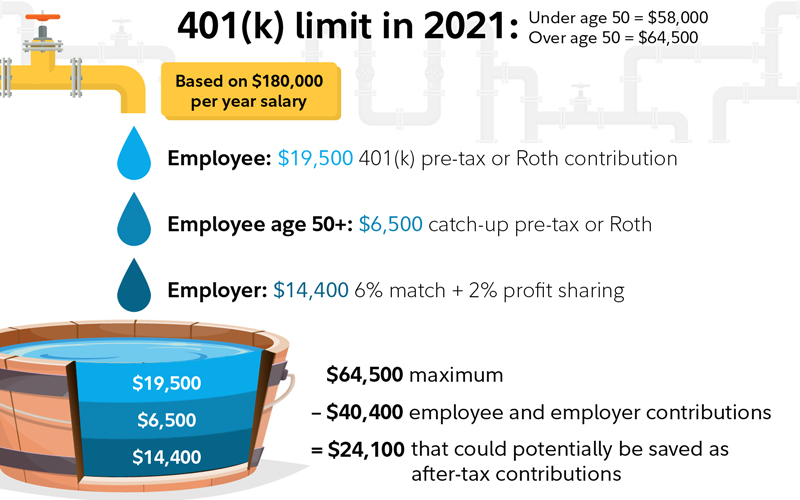
Individuals can deduct contributions to a traditional IRA if they meet certain conditions. This limitation is the same for traditional or Roth IRA contributions. Therefore, individuals under 50 years old can contribute $6,000, and individuals 50 years or older can contribute $7,000 to their IRA in 2022. The additional IRA catch-up contribution for individuals 50 or older, is also unchanged at $1,000. The limit on annual contributions to an IRA remains unchanged at $6,0. That overall limitation is a $3,000 increase compared to 2021.

#401K CATCH UP 2021 PLUS#
The combined employee plus employer 401(k) contribution limit for 2022 is $61,000 ($67,500 for those 50 or older). Employer contributions do not impact an employee’s allowed contributions outlined above however, there is a total combined contribution limit. Many employers also offer 401(k) matching contributions or 401(k) profit-sharing contributions. This limitation is the same for traditional or Roth 401(k) plan contributions. Therefore, employees under 50 years old can contribute $20,500, and employees 50 years or older can contribute a maximum of $27,000 to their 401(k) plan in 2022. 401(k) Maximum Employee ContributionsĮE Additional Catch-Up Contributions (Age 50 or older) The 2022 additional catch-up contribution allowed for employees who are 50 years old and over is unchanged from 2021 and remains at $6,500. In 2022, employees can contribute $1,000 more to their 401(k) compared to 2021. The IRS recently announced the updated 2022 maximum retirement plan contribution limits for 401(k)s and IRAs, which reflect cost-of-living adjustments.
#401K CATCH UP 2021 FREE#
It's free money, after all.Early in the new year is a good time for individuals to revisit how much they are contributing to their retirement plan. If your employer offers to match your contributions up to a certain amount, be sure to invest at least that much in your 401(k) each month.Once you turn 50, add another $6,500 to that limit annually while you continue to work.For each year that you're able, aim to hit the $19,500 limit. If you do exceed it, the IRS might hit you with a 6% excessive-contribution penalty.) 401(k) Retirement Savings TipsĪdvice for maximizing your 401(k) savings: (Note: If you invest in both a 401(k) and a Roth 401(k), the total amount of money you can contribute to both accounts can't exceed the annual limit for your age, either $19,500 or $26,0. However, you might be able to avoid RMDs if you can move the money from a Roth 401(k) into a Roth IRA, which isn't subject to required minimum distributions.

You'll also be required to take minimum distributions from a Roth 401(k) once you turn age 72. You can withdraw contributions and earnings tax- and penalty-free if you're at least age 59 1/2 and have owned the account for five years or more. Contributions go into a Roth 401(k) after you have paid taxes on the money. These accounts combine features of Roth IRAs and 401(k)s.

"In that case, it makes sense to save on a pretax basis and defer income taxes until retirement," Brennan says.Įmployers have been increasing tax diversification in their retirement plans by adding Roth 401(k)s. For example, someone in the 32% or 35% tax bracket may be able to retire in the 24% bracket. Roth 401(k)sĪccording to Melissa Brennan, a certified financial planner in Dallas, a 401(k) works best for someone who anticipates being in a lower income tax bracket at retirement than they're in now. 4 Reasons 401(k) Plans Still Make Sense Traditional 401(k)s vs.


 0 kommentar(er)
0 kommentar(er)
